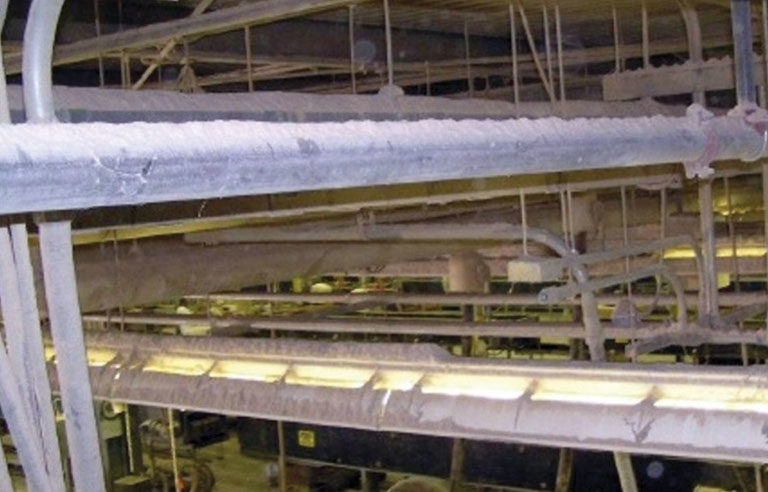Preventing a dust fire
How can we optimize employee safety when handling combustible dust?

Photo: Camfil Air Pollution Control
Responding is Andy Thomason Sr., applications specialist, Camfil Air Pollution Control, Jonesboro, AR.
Many processing and manufacturing activities produce dust particles that cause poor indoor air quality. Even worse, this seemingly innocent dust can ignite and cause a fire or an explosion. Facilities handling materials such as grains, seeds, food, paper, plastics, metals, pharmaceuticals, textiles and pesticides generate these airborne particles.
High-efficiency cartridge-style dust collectors are an effective way to mitigate dangerous working conditions, manage combustible dust hazards and meet regulations. However, collectors are one of the primary sources of combustible dust explosions because they hold large amounts of dust in an enclosed area.
Here are three essential steps to ensure the safety of employees when operating industrial dust collectors.
1. Adhere to relevant standards for safety.
- Start with NFPA 652. This standard lays the groundwork for managing combustible dust. The National Fire Protection Association’s standard on the fundamentals of combustible dust applies to all facilities and operations that deal with combustible dust. Have your dust tested by an experienced testing lab. If tests determine that the dust is combustible, NFPA 652 requires facility operators to conduct a dust hazard analysis to identify threats, create a plan to manage fire and explosion dangers, and provide training for workers.
- Follow NFPA 654. The NFPA standard on the prevention of fire and dust explosions from the manufacturing, processing and handling of combustible particulate solids is comprehensive and details how to design a safe dust-collection system. Depending on the nature and severity of the hazard, it will guide you to more specific standards for explosion venting and deflagration protection.
- Look ahead to NFPA 660. Scheduled to be released in 2025, this standard will consolidate six existing dust-related guidelines into one comprehensive standard.
2. Minimize the risk of dust collector explosions.
- Understand the risk. Dust collectors, being closed vessels filled with dry particles, can be the origin of a fire or an explosion. An ignition source can cause a disastrous explosion.
- Adopt NFPA 68 for explosion protection and NFPA 69 for explosion prevention. These standards set criteria for venting systems to reduce damage and suppression systems to prevent damage.
- Consider additional measures. Installing flameless vents or explosion isolation dampers adds layers of protection, either extinguishing flames or providing a mechanical barrier against an explosion’s spread.
3. Implement education, planning and equipment strategies.
- Create a dust safety program. This includes a thorough analysis of dust hazards and facility risks, an action plan for maintaining a safe dust-collection system, and awareness training for employees.
- Establish housekeeping measures. Regular cleaning will prevent combustible dust buildup.
- Identify potential ignition sources. Knowing where ignition could occur helps in taking preventive measures.
Managing combustible dust is a challenging, but necessary, responsibility. By following these guidelines and keeping up to date on evolving standards, facilities can mitigate the risks associated with industrial dust collectors and maintain a safer working environment.
Editor's note: This article represents the independent views of the author and should not be considered a National Safety Council endorsement.
Post a comment to this article
Safety+Health welcomes comments that promote respectful dialogue. Please stay on topic. Comments that contain personal attacks, profanity or abusive language – or those aggressively promoting products or services – will be removed. We reserve the right to determine which comments violate our comment policy. (Anonymous comments are welcome; merely skip the “name” field in the comment box. An email address is required but will not be included with your comment.)

